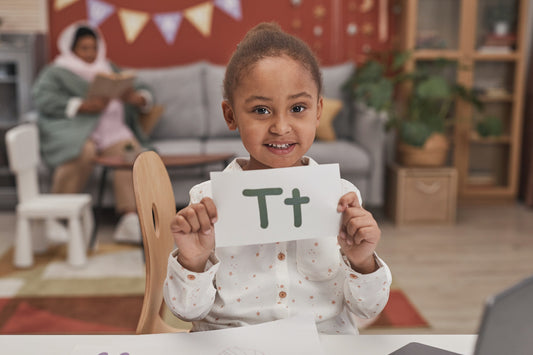
Learning to read at a young age plays a vital role in a child's overall development. It enhances their understanding of the world, enables them to gather information from written materials, and provides an enjoyable source of entertainment through stories and rhymes.
Every child progresses at their own pace, and as a parent, it is crucial to be mindful of your child's maturity and reading level to provide them with suitable books and activities that foster improvement.
In this article, we will share some valuable tips to help you effectively teach your child to read while keeping it engaging and enjoyable for both of you.
Tip 1: Introducing Alphabet Letters and Sounds Together
Studies have revealed that children learn most effectively when they are simultaneously taught the names and sounds of alphabet letters.
For instance, a study involving 58 preschool children demonstrated that those who received instructions on both letter names and sounds exhibited the greatest proficiency in associating letter names with their corresponding sounds.
To implement this approach, encourage your child to trace the letter while pronouncing its sound. For example, when teaching the letter "A," you can say, "The letter A makes the /A/ (ah) sound," and have your child repeat the sound while tracing the letter with their finger.
Tip 2: Emphasizing the Reading Order
It is essential to emphasize to your child that reading should follow a left-to-right and top-to-bottom order.
Although this may seem obvious to adults, children need explicit instruction in this fundamental aspect. Without proper guidance, some children may begin reading from right to left. Therefore, when teaching your child to read, consistently reinforce the concept of reading left to right and top to bottom.
Tip 3: Introducing Final Consonant Blends
When your child has acquired knowledge of certain consonant sounds and short vowel sounds, you can introduce final consonant blends.
Start by teaching words such as "at" and "and," which can lead to learning rhyming words. For example, with "at," you can explore words like rat, pat, mat, cat, sat, bat, spat, and chat.
Similarly, for "and," you can introduce words like sand, band, land, hand, stand, bland, brand, grand, and more. By incorporating rhyming words, your child will develop a broader understanding of word patterns and phonetics. Remember, you don't have to wait until your child has mastered all the letters' sounds before introducing blends.
Conclusion
Learning to read is a gradual and rewarding process that can be facilitated through intuitive and structured steps. By starting early and following these essential tips, even children as young as two years old can embark on their reading journey, while older children can achieve even greater milestones.
As a parent, you hold a vital role as your child's primary teacher, introducing them to the joys of reading and nurturing their literacy skills. Embrace this opportunity to create a nurturing reading environment and watch your child's literacy flourish.



